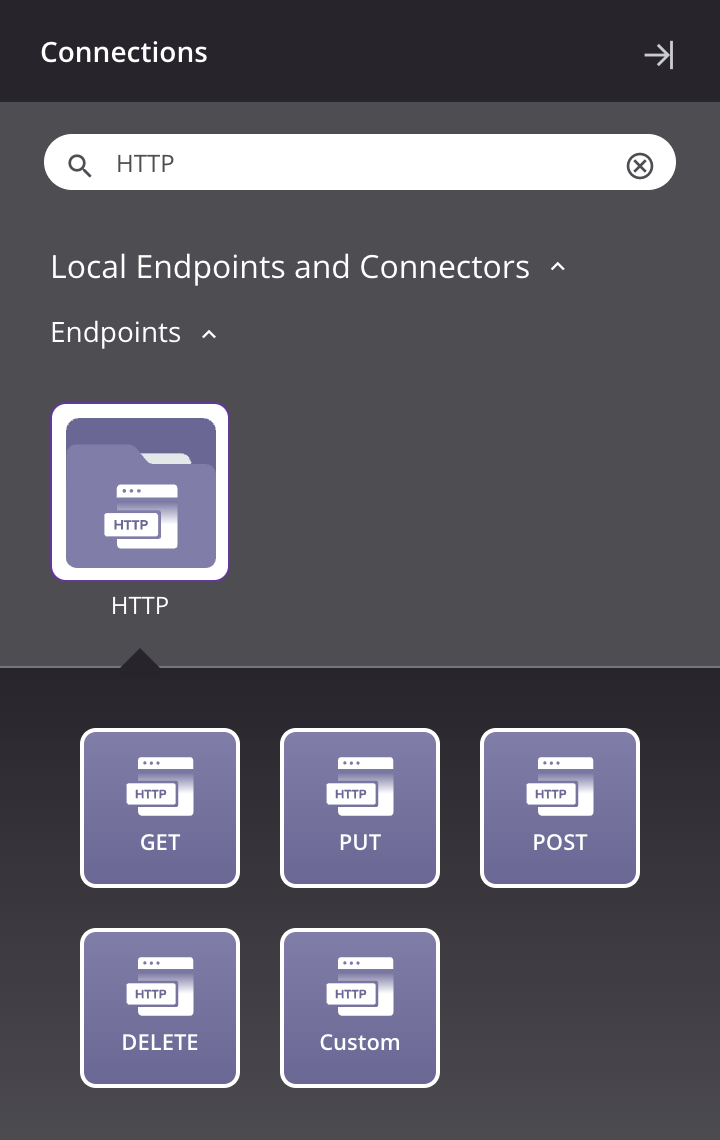HTTP connector¶
Summary¶
The HTTP connector establishes access over the HTTP or HTTPS protocol to a service such as a REST API, GraphQL API, or web form.
The HTTP connector provides an interface for creating an HTTP connection, the foundation used for generating instances of HTTP activities. These activities, once configured, interact with an HTTP server through the connection.
The HTTP connector is accessed from the design component palette's Project endpoints and connectors tab (see Design component palette).
Important
With the release of the HTTP v2 connector, we recommend converting existing HTTP connections and activities to HTTP v2. Learn more about the benefits of the HTTP v2 connector in our HTTP v2 blog post or see a comparison of HTTP and HTTP v2 connector features.
Jitterbit's long-term intention is to deprecate the HTTP connector, which will be announced in accordance with Jitterbit's End-of-life policy. At present, there is no timeline for deprecation and the HTTP connector remains fully supported. We recommend that you convert existing HTTP connections and activities to HTTP v2 when possible.
Connector overview¶
This connector is used to first configure an HTTP connection. Activity types associated with that connection are then used to create instances of activities that are intended to be used as sources (to provide data in an operation) or targets (to consume data in an operation).
Whether an activity instance can be used as a source or a target depends on whether the web service requires a structured request or returns a structured response. Each activity instance is configured with request and response schemas using user-provided custom schemas.
Together, a specific HTTP connection and its activities are referred to as an HTTP endpoint:

-
GET: Retrieves information about a resource on a service accessible over the HTTP or HTTPS protocol and can be used as a source or target in an operation.
-
PUT: Replaces an existing resource on a service accessible over the HTTP or HTTPS protocol and can be used as a source or target in an operation.
-
POST: Creates a new resource on a service accessible over the HTTP or HTTPS protocol and can be used as a source or target in an operation.
-
DELETE: Deletes a resource on a service accessible over the HTTP or HTTPS protocol and can be used as a source or target in an operation.
-
Custom: Performs a specified HTTP method on a service accessible over the HTTP or HTTPS protocol and can be used as a source or target in an operation.
Note
This connector is a native Cloud Studio connector, which may be referred to by Jitterbit when communicating changes made to connectors. The release schedule for native Cloud Studio connectors is based on the cadence of Harmony cloud applications.
Troubleshooting¶
If you experience issues with the HTTP connector, these troubleshooting steps are recommended:
-
Ensure the HTTP connection is successful by using the Test button in the configuration screen. If the connection is not successful, the error returned may provide an indication as to the problem.
-
Check the operation logs for any information written during execution of the operation.
-
Enable operation debug logging (for cloud agents or for private agents) to generate additional log files and data.
-
If using private agents, you can check the agent logs for more information.